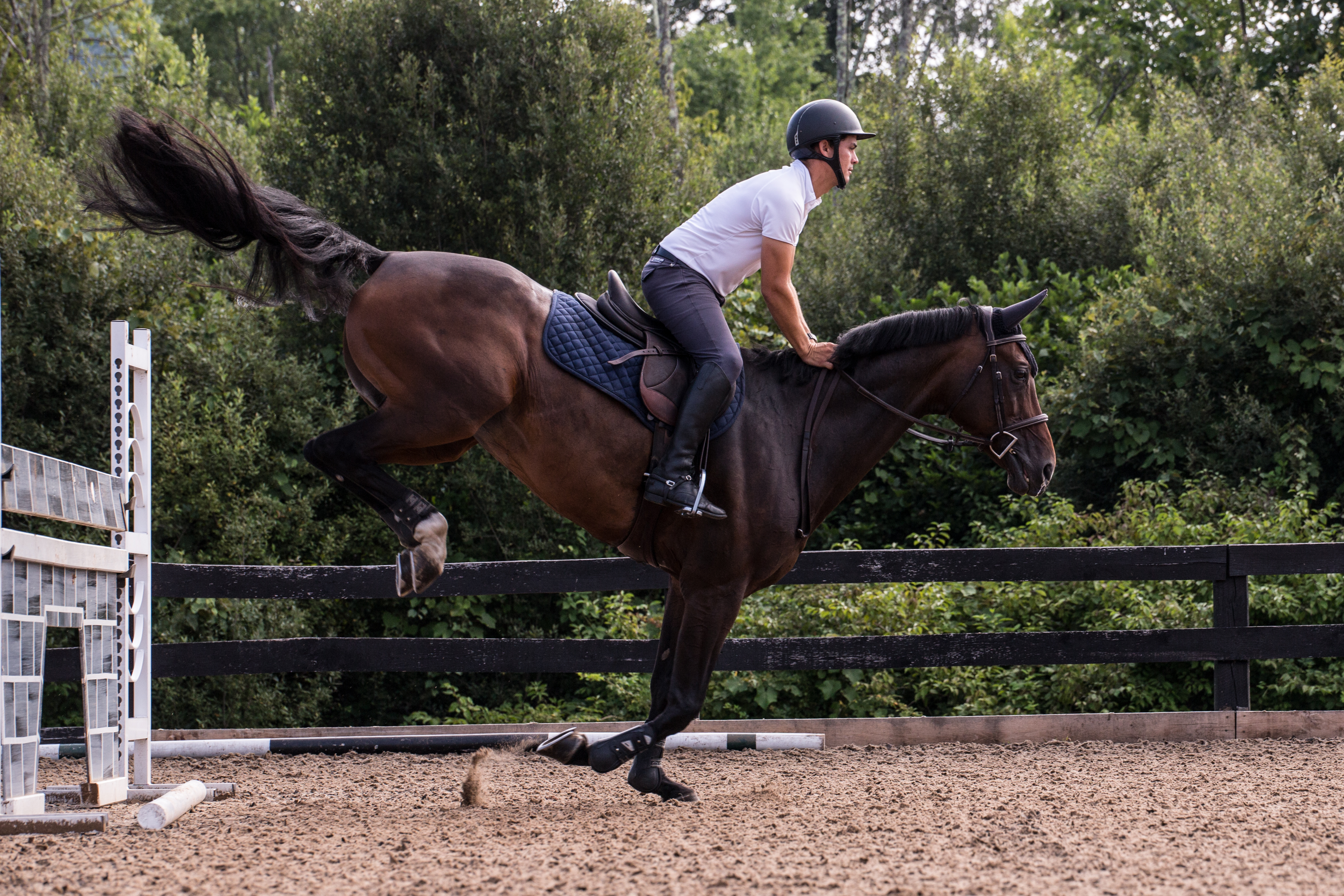Can You Feel The Ground Shifting?
The quality of training and competition footings is a topic near and dear to every performance rider. “Performance riders have a great understanding of the desirable characteristics in a footing,” says Dr. Jeff Thomason at the University of Guelph, in Ontario. “They also realize the impracticality of designing a ‘one-footing-fits-all,’ because so many factors affect how a horse moves on the footing.” The horse’s own conformation, the type of event, the amount of cushion on impact, the need for different levels of traction on takeoff, landing, and during tight turns—all of these factors affect how well the horse performs. They also all have a role in determining the probability that the horse will be injured. But how strong is the influence of the footing in enhancing performance and reducing injury, compared to the effects of experience, training, fitness, nutrition, athletic ability of the horse or rider, or any myriad of other factors?
“Every rider, facility manager, and footing designer that I have spoken with recognizes that more scientific study is needed of how footings enhance performance and their role in causing injury,” says Thomason. This is where the ground is beginning to shift because the flow of scientific information is gathering speed.
The FEI is modifying their standards for testing jumping surfaces, largely based on repeatable methods for testing footings, developed by Dr. Larss Roepstorff in Sweden and Dr. Mick Peterson in the US. Working with them, Thomason is taking a different approach. He puts sensors—accelerometers and strain gauges—right on the hoof, and effectively asks the horse for information on the surface. The results of the first major study comparing different jumping arena footings using this approach are currently being analyzed. They will be unveiled to the performance world at the Royal Winter Fair in Toronto in November.
The study came out of a collaboration between Thomason and Karen Leeming of Footing First, and involved testing a number of horses on 8 different footings on the Wellington circuit. “Thomason says, “This was a perfect match of science and industry. Karen brought her experience in the horse world and in footings design but exerted no proprietary control over the data collection and analysis, which was my domain. The results, which will be presented as found, will take us another step forward in understanding how variation in footing characteristic affect the mechanics of how the horse moves. But if you want to see the results first, you’ll have to come and find us at the Royal.”
